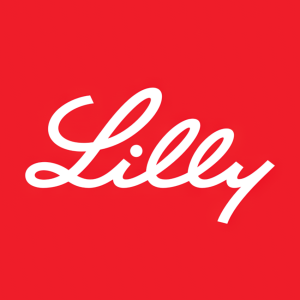OLUMIANT® Significantly Improved Hair Regrowth to At Least 80% Scalp Coverage as Early as 24 Weeks Across First Completed Phase 3 Studies for Alopecia Areata
Rhea-AI Summary
Eli Lilly and Incyte announced significant results from two pivotal Phase 3 trials (BRAVE-AA1 and BRAVE-AA2) for OLUMIANT (baricitinib) in treating severe alopecia areata. The once-daily 4-mg dose demonstrated superior scalp hair regrowth compared to placebo, with 35.2% of patients achieving over 80% scalp coverage at 36 weeks. The 2-mg dose also showed notable improvements. OLUMIANT has received Breakthrough Therapy designation from the FDA, and a supplemental New Drug Application is planned. The drug has an established safety profile with manageable side effects, underscoring its potential in addressing this unmet medical need.
Positive
- 35.2% of patients achieved over 80% scalp coverage with OLUMIANT 4-mg after 36 weeks in BRAVE-AA1.
- Significant hair regrowth observed as early as 16 weeks for OLUMIANT 4-mg.
- Received Breakthrough Therapy designation from the FDA.
- Supplemental New Drug Application planned for second half of 2021.
Negative
- None.
News Market Reaction 1 Alert
On the day this news was published, LLY gained 0.30%, reflecting a mild positive market reaction.
Data tracked by StockTitan Argus on the day of publication.
INDIANAPOLIS, Sept. 30, 2021 /PRNewswire/ -- Eli Lilly and Company (NYSE: LLY) and Incyte (NASDAQ: INCY) announced today detailed results from two pivotal Phase 3 trials (BRAVE-AA1 and BRAVE-AA2), which found once-daily OLUMIANT® (baricitinib) 4-mg was superior to placebo in achieving significant scalp hair regrowth as early as 24 weeks in adults with severe alopecia areata (AA) as defined by ≥
Significant improvements in scalp hair regrowth compared to placebo were achieved at 36 weeks for patients taking OLUMIANT 2-mg and 4-mg oral doses, as previously disclosed in topline findings from BRAVE-AA1 and BRAVE-AA2 earlier this year. In both studies, a greater proportion of patients taking OLUMIANT 4-mg compared to placebo also achieved full regrowth or regrowth with minimal gaps in coverage of eyebrow and eyelash hair at 36 weeks, which were key secondary endpoints of the studies.
These results, along with safety data in adult patients with moderate to severe atopic dermatitis (AD), are being presented virtually at the 30th European Academy of Dermatology and Venerology (EADV) Congress, taking place from Sept. 29-Oct. 2, 2021.
Alopecia areata is a widely misunderstood, autoimmune disease that can cause extreme and patchy hair loss on the scalp, face and other areas of the body, along with emotional distress and psychosocial effects. OLUMIANT has received Breakthrough Therapy designation from the U.S. Food and Drug Administration (FDA) for the treatment of AA. Lilly plans to submit a supplemental New Drug Application (sNDA) to the FDA for OLUMIANT in AA in the second half of 2021.
OLUMIANT Demonstrated Improvement in Scalp, Eyelash and Eyebrow Hair Regrowth in Patients with AA in Two Phase 3 Trials
In BRAVE-AA1 and BRAVE-AA2, the first completed, randomized, double-blind, placebo-controlled Phase 3 trials for AA, 598 and 490 patients, respectively, underwent 36 weeks of treatment. Both studies included adults with severe AA, defined as a Severity of Alopecia Tool (SALT) score ≥50 (those with ≥
Across treatment groups, the average age of participants was 37.5 years old, and they had lived with AA for a mean of 12.2 years since first experiencing symptoms, with the onset for hair loss occurring at approximately age 25.
In BRAVE-AA1, statistically significant improvement in scalp hair regrowth occurred as early as 16 weeks among patients treated with OLUMIANT 4-mg and 24 weeks with OLUMIANT 2-mg, compared to placebo. At 16 weeks, nearly 1 in 5 patients (
In BRAVE-AA2, statistically significant improvement occurred as early as 24 weeks for patients treated with OLUMIANT 4-mg, with more than 1 in 4 patients (
Across both studies at 36 weeks – the study's primary endpoint – 1 out of 3 patients treated with OLUMIANT 4-mg (BRAVE-AA1=
Achievement of full regrowth or regrowth with minimal gaps in eyebrow and eyelash hair was also seen at 36 weeks with OLUMIANT 4-mg for 1 in 3 patients who at baseline had significant gaps or no notable eyebrows, as compared to patients taking placebo (BRAVE-AA1 eyebrow=
Statistically significant eyebrow regrowth results (
The safety profile of OLUMIANT was consistent with previously-published safety data, and no new safety signals were observed in the 36-week duration of these clinical trials. Few patients discontinued treatment due to adverse events (
For methodology, see the "About the Studies" section below.
"These findings are promising for patients with severe alopecia areata, as they support the potential for OLUMIANT to help patients regrow hair on the scalp, eyebrows and eyelashes," said Brett King, M.D., Ph.D., F.A.A.D., associate professor of dermatology at Yale University School of Medicine and lead author of these analyses. "Because there are no approved systemic therapies for alopecia areata, there is significant unmet need and health care providers and patients eagerly await approved treatment options for this disease."
Tolerability of OLUMIANT Was Further Demonstrated for Acne, Headache, and Gastrointestinal (GI) Events in Pooled Analysis Across Eight Studies of 2,500 Patients with AD
In a pooled analysis across eight studies, tolerability outcomes for acne, headache and GI adverse events (diarrhea, abdominal pain, nausea, vomiting and constipation) were evaluated in more than 2,500 adult patients with moderate to severe atopic dermatitis (AD) taking OLUMIANT 2-mg and 4-mg once daily.
Among those patients treated with OLUMIANT,
For methodology and additional results, see the "About the Studies" section below.
"OLUMIANT has one of the largest and longest sets of available safety data in the JAK inhibitor class, spanning approximately 19,000 patient years in a period of over nine years across the clinical development program," said Lotus Mallbris, M.D., Ph.D., vice president of immunology development and U.S. and global medical affairs at Lilly. "We are encouraged that these data presented at EADV reinforce OLUMIANT's potential to be a breakthrough treatment for people suffering from significant hair loss due to alopecia areata."
About The Studies
- Efficacy and Safety of Baricitinib in Adults with Alopecia Areata: Phase 3 Results from Two Randomized Controlled Trials (BRAVE-AA1 and BRAVE-AA2)
- In BRAVE-AA1 and BRAVE-AA2, respectively, 654 and 546 patients were randomized, and 598 (
91.4% ) and 490 (89.7% ) completed 36 weeks of treatment. In both BRAVE-AA1 and BRAVE-AA2, adults with severe AA at screening and baseline (defined as Severity of Alopecia Tool [SALT] score ≥50) were randomized 3:2:2 to once-daily OLUMIANT 4-mg, 2-mg or placebo. - The primary endpoint was the proportion of patients achieving SALT score ≤20 (≤
20% scalp hair loss or ≥80% hair coverage) at 36 weeks. Key secondary outcomes included the proportions of patients achieving ClinRO Measure for Eyebrow Hair Loss™ and ClinRO Measure for Eyelash Hair Loss™ scores of 0 or 1 (full coverage or minimal gaps) with ≥2-point improvements from baseline at Week 36 (among those with baseline scores ≥2 [significant gaps to no notable hair]). - Data were censored after treatment discontinuation or if collected remotely due to the COVID-19 pandemic. Treatment comparisons were analyzed using logistic regression with non-responder imputation applied to missing data.
- Pooled Analysis of Baricitinib Tolerability in Patients with Atopic Dermatitis in Relation to Acne, Headache, and Gastrointestinal Events From 8 Clinical Trials
- This pooled analysis included patient-level safety data from eight clinical trials, including six double-blinded, randomized, placebo-controlled studies, one double-blinded, randomized, long-term extension study and one open-label, long-term extension study. A total of 2,531 patients were given OLUMIANT for 2,247 patient-years.
- Outcomes are reported in three analysis sets: placebo-controlled, 2-mg – 4-mg extended, and all-OLUMIANT AD. Tolerability outcomes included the common treatment-emergent adverse events of acne, headache, and GI events (diarrhea, nausea, vomiting, constipation, and abdominal pain). The proportion of patients with events and adjusted incidence rates were calculated along with analysis of severity, onset and duration of events.
OLUMIANT is also being investigated for the treatment of adults with systemic lupus erythematosus, juvenile idiopathic arthritis, and COVID-19 (outside of Japan). AA is the second potential treatment indication in dermatology for OLUMIANT.
About OLUMIANT®
OLUMIANT, a once-daily, oral JAK inhibitor was discovered by Incyte and licensed to Lilly. It is approved in the U.S. and more than 75 countries as a treatment for adults with moderate to severe rheumatoid arthritis and is approved in more than 40 countries, including the European Union and Japan, for the treatment of adult patients with moderate to severe atopic dermatitis who are candidates for systemic therapy. Marketing authorization for the treatment of hospitalized patients with COVID-19 has been granted for OLUMIANT in multiple countries including Japan and Switzerland. The U.S. FDA-approved labeling for OLUMIANT includes a Boxed Warning for Serious Infections, Malignancy, and Thrombosis. See the full Prescribing Information here. Baricitinib is also being investigated in alopecia areata (AA), juvenile idiopathic arthritis (JIA) and systematic lupus erythematosus (SLE).
In December 2009, Lilly and Incyte announced an exclusive worldwide license and collaboration agreement for the development and commercialization of baricitinib and certain follow-on compounds for patients with inflammatory and autoimmune diseases.
Indication and Usage for OLUMIANT (baricitinib) tablets (in the United States) for RA patients
OLUMIANT® (baricitinib) 2 mg is indicated for the treatment of adult patients with moderately to severely active rheumatoid arthritis who have had an inadequate response to one or more tumor necrosis factor (TNF) antagonist therapies. Limitation of Use: Not recommended for use in combination with other JAK inhibitors, biologic disease-modifying antirheumatic drugs (DMARDs), or with potent immunosuppressants such as azathioprine and cyclosporine.
IMPORTANT SAFETY INFORMATION FOR OLUMIANT (baricitinib) tablets
WARNING: SERIOUS INFECTIONS, MALIGNANCY, AND THROMBOSIS
SERIOUS INFECTIONS: Patients treated with Olumiant are at risk for developing serious infections that may lead to hospitalization or death. Most patients who developed these infections were taking concomitant immunosuppressants such as methotrexate or corticosteroids. If a serious infection develops, interrupt Olumiant until the infection is controlled. Reported infections include:
- Active tuberculosis (TB), which may present with pulmonary or extrapulmonary disease. Test patients for latent TB before initiating Olumiant and during therapy. If positive, start treatment for latent infection prior to Olumiant use.
- Invasive fungal infections, including candidiasis and pneumocystosis. Patients with invasive fungal infections may present with disseminated, rather than localized, disease.
- Bacterial, viral, and other infections due to opportunistic pathogens.
Carefully consider the risks and benefits of Olumiant prior to initiating therapy in patients with chronic or recurrent infection.
Closely monitor patients for the development of signs and symptoms of infection during and after treatment with Olumiant including the possible development of TB in patients who tested negative for latent TB infection prior to initiating therapy.
MALIGNANCIES: Lymphoma and other malignancies have been observed in patients treated with Olumiant.
THROMBOSIS: Thrombosis, including deep venous thrombosis (DVT) and pulmonary embolism (PE), has been observed at an increased incidence in patients treated with Olumiant compared to placebo. In addition, there were cases of arterial thrombosis. Many of these adverse events were serious and some resulted in death. Patients with symptoms of thrombosis should be promptly evaluated.
WARNINGS AND PRECAUTIONS
SERIOUS INFECTIONS: The most common serious infections reported with Olumiant included pneumonia, herpes zoster, and urinary tract infection. Among opportunistic infections, tuberculosis, multidermatomal herpes zoster, esophageal candidiasis, pneumocystosis, acute histoplasmosis, cryptococcosis, cytomegalovirus, and BK virus were reported with Olumiant. Some patients have presented with disseminated rather than localized disease, and were often taking concomitant immunosuppressants such as methotrexate or corticosteroids. Avoid Olumiant in patients with an active, serious infection, including localized infections. Consider the risks and benefits of treatment prior to initiating Olumiant in patients:
- with chronic or recurrent infection
- who have been exposed to TB
- with a history of a serious or an opportunistic infection
- who have resided or traveled in areas of endemic tuberculosis or endemic mycoses; or
- with underlying conditions that may predispose them to infection.
Closely monitor patients for infections during and after Olumiant treatment. Interrupt Olumiant if a patient develops a serious infection, an opportunistic infection, or sepsis. Do not resume Olumiant until the infection is controlled.
Tuberculosis – Before initiating Olumiant, evaluate and test patients for latent or active infection and treat patients with latent TB with standard antimycobacterial therapy. Olumiant should not be given to patients with active TB. Consider anti-TB therapy prior to initiating Olumiant in patients with a history of latent or active TB in whom an adequate course of treatment cannot be confirmed, and for patients with a negative test for latent TB but who have risk factors for TB infection. Monitor patients for TB during Olumiant treatment.
Viral Reactivation – Viral reactivation, including cases of herpes virus reactivation (e.g., herpes zoster), were reported in clinical studies with Olumiant. If a patient develops herpes zoster, interrupt Olumiant treatment until the episode resolves.
The impact of Olumiant on chronic viral hepatitis reactivation is unknown. Screen for viral hepatitis in accordance with clinical guidelines before initiating Olumiant.
MALIGNANCY AND LYMPHOPROLIFERATIVE DISORDERS: Malignancies were observed in Olumiant clinical studies. Consider the risks and benefits of Olumiant prior to initiating therapy in patients with a known malignancy other than a successfully treated non-melanoma skin cancer (NMSC) or when considering continuing Olumiant in patients who develop a malignancy. NMSCs were reported in patients treated with Olumiant. Periodic skin examination is recommended for patients who are at increased risk for skin cancer.
THROMBOSIS: Thrombosis, including DVT and PE, has been observed at an increased incidence in Olumiant-treated patients compared to placebo. In addition, arterial thrombosis events in the extremities have been reported in clinical studies with Olumiant. Many of these adverse events were serious and some resulted in death. There was no clear relationship between platelet count elevations and thrombotic events. Use Olumiant with caution in patients who may be at increased risk of thrombosis. If clinical features of DVT/PE or arterial thrombosis occur, evaluate patients promptly and treat appropriately.
GASTROINTESTINAL PERFORATIONS: Gastrointestinal perforations have been reported in Olumiant clinical studies, although the role of JAK inhibition in these events is not known. Use Olumiant with caution in patients who may be at increased risk for gastrointestinal perforation (e.g., patients with a history of diverticulitis). Promptly evaluate patients who present with new onset abdominal symptoms for early identification of gastrointestinal perforation.
LABORATORY ABNORMALITIES:
Neutropenia – Olumiant treatment was associated with an increased incidence of neutropenia (absolute neutrophil count [ANC] <1000 cells/mm3) compared to placebo. Avoid initiation or interrupt Olumiant treatment in patients with an ANC <1000 cells/mm3. Evaluate at baseline and thereafter according to routine patient management.
Lymphopenia – Absolute lymphocyte count (ALC) <500 cells/mm3 were reported in Olumiant clinical trials. Lymphocyte counts less than the lower limit of normal were associated with infection in patients treated with Olumiant, but not placebo. Avoid initiation or interrupt Olumiant treatment in patients with an ALC <500 cells/mm3. Evaluate at baseline and thereafter according to routine patient management.
Anemia – Decreases in hemoglobin levels to <8 g/dL were reported in Olumiant clinical trials. Avoid initiation or interrupt Olumiant treatment in patients with hemoglobin <8 g/dL. Evaluate at baseline and thereafter according to routine patient management.
Liver Enzyme Elevations – Olumiant treatment was associated with increased incidence of liver enzyme elevation compared to placebo. Increases of ALT ≥5x upper limit of normal (ULN) and increases of AST ≥10x ULN were observed in patients in Olumiant clinical trials.
Evaluate at baseline and thereafter according to routine patient management. Promptly investigate the cause of liver enzyme elevation to identify potential cases of drug-induced liver injury. If increases in ALT or AST are observed and drug-induced liver injury is suspected, interrupt Olumiant until this diagnosis is excluded.
Lipid Elevations – Treatment with Olumiant was associated with increases in lipid parameters, including total cholesterol, low-density lipoprotein cholesterol, and high-density lipoprotein cholesterol. Assess lipid parameters approximately 12 weeks following Olumiant initiation. Manage patients according to clinical guidelines for the management of hyperlipidemia.
VACCINATIONS: Avoid use of live vaccines with Olumiant. Update immunizations in agreement with current immunization guidelines prior to initiating Olumiant therapy.
HYPERSENSITIVITY: Reactions such as angioedema, urticaria, and rash that may reflect drug sensitivity have been observed in patients receiving Olumiant, including serious reactions. If a serious hypersensitivity reaction occurs, promptly discontinue Olumiant while evaluating the potential causes of the reaction.
ADVERSE REACTIONS
Most common adverse reactions include: upper respiratory tract infections (
USE IN SPECIFIC POPULATIONS
PREGNANCY AND LACTATION: No information is available to support the use of Olumiant in pregnancy or lactation. Advise women not to breastfeed during treatment with Olumiant.
HEPATIC AND RENAL IMPAIRMENT: Olumiant is not recommended in patients with severe hepatic impairment or in patients with severe renal impairment.
Please click to access full Prescribing Information, including Boxed Warning about Serious infections, Malignancies, and Thrombosis, and Medication Guide.
BA HCP ISI 09JUL2020
About Alopecia Areata
Alopecia areata (AA) is an autoimmune disease that causes patchy hair loss on the scalp, face and sometimes on other areas of the body that can progress. AA often first appears during childhood and can be different for everyone who has it. People of all ages, males/females and all ethnic groups can develop AA.
About Atopic Dermatitis
Atopic dermatitis (AD), or atopic eczema, is a chronic, relapsing skin disease characterized by intense itching, dry skin and inflammation that can be present on any part of the body. AD is a heterogeneous disease both biologically and clinically, and may be characterized by a highly variable appearance in which flares occur in an unpredictable manner.
Moderate-to-severe AD is characterized by intense itching, which leads to an itch-scratch cycle that further damages the skin. Like other chronic inflammatory diseases, AD is immune-mediated and involves a complex interplay of immune cells and inflammatory cytokines.
About Eli Lilly and Company
Lilly is a global health care leader that unites caring with discovery to create medicines that make life better for people around the world. We were founded more than a century ago by a man committed to creating high-quality medicines that meet real needs, and today we remain true to that mission in all our work. Across the globe, Lilly employees work to discover and bring life-changing medicines to those who need them, improve the understanding and management of disease, and give back to communities through philanthropy and volunteerism. To learn more about Lilly, please visit us at lilly.com and lilly.com/newsroom.
About Incyte
Incyte is a Wilmington, Delaware-based, global biopharmaceutical company focused on finding solutions for serious unmet medical needs through the discovery, development and commercialization of proprietary therapeutics. For additional information on Incyte, please visit Incyte.com and follow @Incyte.
OLUMIANT® is a registered trademark owned or licensed by Eli Lilly and Company, its subsidiaries, or affiliates.
P-LLY
Lilly Forward-Looking Statement
This press release contains forward-looking statements (as that term is defined in the Private Securities Litigation Reform Act of 1995) about OLUMIANT (baricitinib) as a potential treatment for patients with alopecia areata and for other conditions and reflects Lilly's and Incyte's current beliefs and expectations. However, as with any pharmaceutical product, there are substantial risks and uncertainties in the process of drug research, development, and commercialization. Among other things, there can be no guarantee that planned or ongoing studies will be completed as planned, that future study results will be consistent with the results to date, and that OLUMIANT will receive additional regulatory approvals, or be commercially successful. For further discussion of these and other risks and uncertainties, see Lilly's and Incyte's most recent respective Form 10-K and Form 10-Q filings with the United States Securities and Exchange Commission. Except as required by law, Lilly and Incyte undertake no duty to update forward-looking statements to reflect events after the date of this release.
Refer to: | Marlo Scott; scott_marlo@lilly.com; +1-317-407-8879 (Lilly media) |
Kevin Hern; hern_kevin_r@lilly.com; +1-317-277-1838 (Lilly investors) | |
Catalina Loveman; cloveman@incyte.com; +1-302-498-6171 (Incyte media) | |
Christine Chiou; cchiou@incyte.com; +1-302-274-4773 (Incyte investors) |
![]() View original content to download multimedia:https://www.prnewswire.com/news-releases/olumiant-significantly-improved-hair-regrowth-to-at-least-80-scalp-coverage-as-early-as-24-weeks-across-first-completed-phase-3-studies-for-alopecia-areata-301388398.html
View original content to download multimedia:https://www.prnewswire.com/news-releases/olumiant-significantly-improved-hair-regrowth-to-at-least-80-scalp-coverage-as-early-as-24-weeks-across-first-completed-phase-3-studies-for-alopecia-areata-301388398.html
SOURCE Eli Lilly and Company










